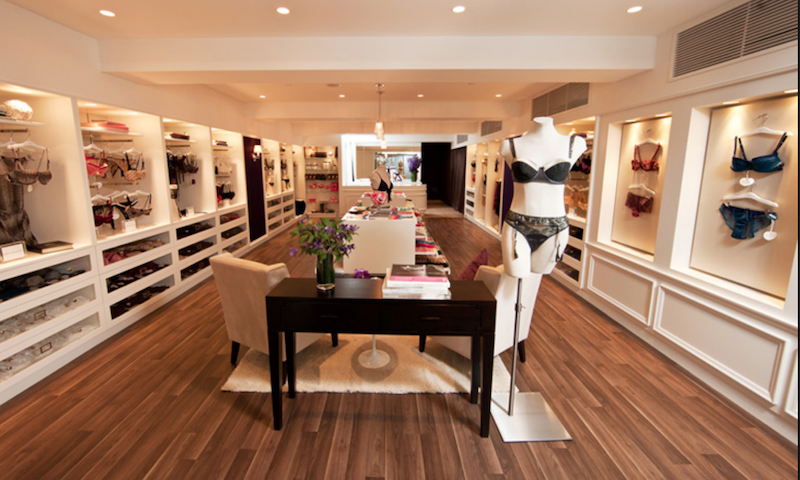The Future of the Lingerie Industry: Trends and Growth

The Future of the Lingerie Industry: Trends and Growth Opportunities for the Next Five Years
The global lingerie industry is poised for significant growth in the next five years, driven by evolving consumer preferences, technological advancements, and a strong focus on inclusivity and sustainability. Valued at approximately $88 billion in 2023, the global lingerie market size is projected to reach well over $130 billion by 2028. This lingerie market size projection in USD Billion highlights the robust expansion expected during the forecast period of 2023-2028.
For business leaders, investors, and marketers, understanding the forces shaping the future of the lingerie industry is critical to capitalizing on its potential. Global market growth is being propelled by key growth factors such as technological advancements, changing consumer preferences, and the rise of online shopping. Let’s explore the key trends and drivers that will fuel growth in this dynamic and competitive market.
Asia Pacific dominated the global lingerie market in recent years, with rapid growth and a significant market share attributed to increased consumer awareness, rising incomes, and the presence of international brands.
Ongoing investments in R&D, product innovation, and strategic market activities are expected to drive further growth in the industry during the forecast period.
1. Introduction to the Lingerie Industry
The lingerie industry stands as a dynamic and influential segment within the global fashion market, offering a diverse range of intimate apparel designed to meet the evolving needs and preferences of consumers. From everyday essentials like bras and panties to specialty items such as corsets and shapewear, lingerie serves both practical and expressive purposes. The market’s evolution is closely tied to changing fashion trends, with consumers seeking products that reflect their personal style and values. Advancements in fabric technology have led to the creation of more comfortable, supportive, and stylish lingerie, while the movement toward body positivity has encouraged brands to embrace inclusivity in sizing and marketing. Key players in the lingerie market continually innovate, expanding their product lines to cater to a broader audience and ensuring that the industry remains at the forefront of both fashion and function.
2. Global Lingerie Market Overview
The global lingerie market has experienced remarkable growth in recent years, fueled by rising disposable incomes, heightened fashion awareness, and the increasing popularity of online shopping. In 2022, the market was valued at USD 88.32 billion, and it is projected to reach USD 141.81 billion by 2030, reflecting a robust compound annual growth rate (CAGR) of 6.1% from 2023 to 2030. This impressive market growth highlights the expanding influence of both established and emerging lingerie brands, as well as the critical role of retail stores and online lingerie brands in making products accessible to a wider audience. The Asia Pacific region, in particular, has become a powerhouse in the global lingerie market, with countries like China and India driving demand for premium and fashionable lingerie. As the market size continues to grow, the global lingerie industry is poised for further expansion and innovation.
3. Market Segmentation in Lingerie
The lingerie market is segmented across several key dimensions, including product type, distribution channel, and region. Among product types, the bras segment leads the market, thanks to its essential role in women’s wardrobes and the wide variety of styles available, from everyday bras to sports bras and nursing bras. Distribution channels are divided between online and offline options, with online stores gaining significant traction due to their convenience, broad product selection, and ability to cater to a diverse range of consumer needs. Regionally, the Asia Pacific market dominates, followed by North America and Europe, each offering unique opportunities for lingerie brands to expand their reach. The combination of a diverse product range, multiple advantages of online shopping, and regional growth drivers ensures that the lingerie market remains vibrant and competitive.
1. The Rise of Body Inclusivity and Diversity
The days of "one-size-fits-all" are over. Consumers increasingly expect brands to celebrate body diversity by offering inclusive sizing, cuts, and marketing campaigns that cater to all shapes, ethnicities, and ages. Leading brands have already embraced inclusivity by expanding size ranges and featuring diverse models, but this trend is far from peaking.
By 2028, The Future of the Lingerie Industry: Trends and Growth the demand for body-positive lingerie will continue to grow as consumers prioritize comfort, fit, and representation. Businesses that champion inclusivity—both in product development and brand messaging—will capture greater market share and build stronger customer loyalty.
2. The Impact of Technology and Smart Lingerie
Innovation is rapidly transforming lingerie design and shopping experiences. Emerging technologies like AI, 3D body scanning, and virtual fittings are making it easier for consumers to find the perfect fit, addressing one of the industry’s longstanding challenges—fit inconsistency. These technological innovations are a key driver in the evolution of lingerie, enabling brands to enhance both product functionality and the overall shopping experience.
Moreover, smart lingerie is gaining traction. From wearable tech that monitors body metrics to temperature-regulating fabrics, technology-driven lingerie will open up opportunities for businesses to merge functionality with fashion.
3. Sustainability as a Market Imperative
Sustainability is no longer optional. The modern consumer demands transparency and eco-conscious practices across the supply chain. This trend is pushing brands to adopt eco-friendly fabrics such as organic cotton, recycled lace, and biodegradable mesh, while reducing waste through circular design processes.
The growth of slow fashion and sustainable lingerie will drive long-term value as brands position themselves as ethical leaders. Companies that incorporate carbon-neutral operations, The Future of the Lingerie Industry: Trends and Growth transparent supply chains, and recyclable packaging will dominate as sustainability becomes a purchase-driving factor.
4. Comfort and the Dominance of “Everyday Luxury”
The definition of lingerie is expanding beyond sensuality to prioritize comfort and versatility. Consumers now seek intimate apparel that seamlessly blends style, comfort, and function for everyday wear. The rise of wire-free bras, bralettes, seamless fabrics, and soft loungewear-like lingerie reflects this shift. Additionally, the use of flexible fabrics such as lace, cotton, and silk enhances comfort and product variety, making lingerie more versatile and suitable for a wider range of preferences and body types.
Moreover, the concept of “everyday luxury”—where lingerie serves as a personal indulgence for comfort and confidence—will drive sales growth. Brands offering products that look good, feel good, and perform well will thrive in the coming years.
5. The Growth of E-Commerce and Direct-to-Consumer (DTC) Models
The global shift to e-commerce has transformed how consumers purchase lingerie. By 2028, online lingerie sales will account for a substantial portion of the market, fueled by seamless shopping experiences, personalization, and the convenience of virtual fittings. Online channels are increasingly important for reaching a broader consumer base and driving market growth.
The Future of the Lingerie Industry: Trends and Growth DTC brands will lead this revolution, disrupting traditional retail by offering transparency, better pricing, and highly personalized experiences. Businesses investing in user-friendly websites, mobile-first strategies, and data-driven marketing will be well-positioned to capture the digital consumer. While online channels are growing rapidly, the offline segment—including physical stores—continues to play a significant role in the lingerie market.
6. The Role of Emerging Markets
Regional insights reveal that while North America and Europe remain dominant players, Asia-Pacific and Latin America are emerging as key growth regions. Currently, Asia-Pacific is the largest market, holding the highest lingerie market share, while Latin America is also experiencing notable growth in market share. Rising disposable income, urbanization, and a cultural shift toward self-expression are driving increased demand for lingerie in these markets.
North America held a significant share of the global lingerie market in recent years, supported by consumer sophistication, demand for premium brands, and expanded distribution channels.
The Future of the Lingerie Industry: Trends and Growth In particular, countries like India, China, and Brazil represent significant opportunities for global brands to expand their reach. Increasing product demand in these countries is driven by changing lifestyles and evolving fashion trends. Brands that understand local cultural nuances while delivering innovative products will gain a competitive edge.
10. Market Share and Competition
The global lingerie market is characterized by intense competition, with several key players vying for market share through innovation and strategic product offerings. Brands such as Victoria’s Secret, Calvin Klein, and Triumph International are recognized leaders, each leveraging their strengths to attract more consumers and maintain their positions in the market. The bras segment, in particular, is a focal point for competition, as brands strive to deliver comfort, quality, and stylish designs that resonate with evolving consumer preferences. The push for body positivity and the adoption of environmentally friendly materials are reshaping the competitive landscape, prompting key players to adapt their strategies and introduce new product lines. As a result, the distribution of market share is continually influenced by brands’ ability to respond to changing trends and deliver value to their customers.
11. Key Players and Strategies
Leading companies in the lingerie market, including Victoria’s Secret, Jockey International, and MAS Holdings, are implementing a range of strategies to strengthen their positions in the global market. These key players invest heavily in research and development to create innovative, comfortable, and stylish lingerie that meets the diverse needs of their target audience. Expanding distribution channels—both online and offline—enables them to reach more potential customers and enhance the shopping experience. Ethical practices and the use of sustainable materials are increasingly central to their operations, reflecting a commitment to responsible manufacturing and consumer trust. Inclusivity is another major focus, with brands offering a broader selection of sizes and styles to accommodate different body types and evolving consumer preferences. By leveraging digital platforms and e-commerce, these lingerie brands are able to connect directly with consumers, personalize their offerings, and stay ahead in a rapidly changing global market.
7. The Reinvention of Brick-and-Mortar Retail
While e-commerce dominates the conversation, physical stores are being reimagined as experience-driven retail spaces. Brick-and-mortar stores, including lingerie stores as specialty retail outlets, play a key role in market growth by offering a variety of undergarments and personalized services that attract customers. These stores are evolving to provide personalized fittings, styling consultations, and immersive brand experiences that blend online and offline shopping.
The Future of the Lingerie Industry: Trends and Growth Lingerie boutiques, in particular, are becoming community-driven spaces where customers can interact with products, attend events, and enjoy a tailored shopping experience. This hybrid model will redefine the retail landscape for lingerie.
Conclusion: A Thriving Future for the Global Lingerie Market
The Future of the Lingerie Industry: Trends and Growth
The lingerie industry is undergoing an exciting evolution, propelled by inclusivity, technology, sustainability, and changing consumer demands. Brands that embrace innovation, prioritize comfort, and respond to the growing demand for ethical practices will lead the way over the next five years. Innovative designs, featuring advanced fabric technologies and seamless manufacturing, are shaping the future of the industry by meeting consumer demands for both style and comfort.
As the global market expands, businesses have an opportunity to redefine lingerie as more than just intimate apparel—it’s a symbol of self-confidence, empowerment, and personal expression. Key companies and industry participants such as Victoria's Secret and Jockey International Inc are driving market growth and setting trends through strategic initiatives and product innovation. Expanding the product line and launching new brands, including special categories like bridal wear, are crucial for meeting evolving consumer needs and capturing new market segments. Key factors such as product innovation, distribution channels, and shifting consumer preferences will continue to influence the industry's future. Additionally, the experience of purchasing lingerie is evolving with new retail models and digital platforms, making it more accessible and personalized for consumers.
The future of lingerie isn’t just about what women wear—it’s about how it makes them feel.
Are you ready to adapt to the lingerie industry’s evolution? Share your insights, challenges, or innovative strategies in the comments below! Let’s connect and shape the future of intimate fashion together.


